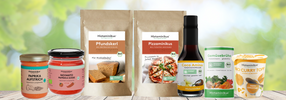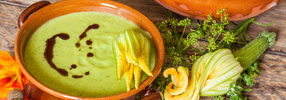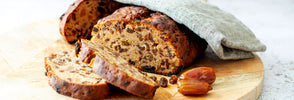
Biogenic amine
Biogenic amines are basic nitrogen compounds with different structure. They are created as mines of amino acids and proteins with the participation of bacterial microorganisms. That is why, for example, histamine is also one of the biogenic amines because it is formed from the amino acid Histidin.
Biogenic amines are mostly named after their original amino acid (e.g. histamine from histidine, tyramine from tyrosine, etc.). On the one hand, they are integrated into cell metabolism in a variety of ways and serve the organism as signal substances. On the other hand, they come in many foods Like fish products, meat products, cheese, wine, beer and other fermented, long -mature and long -mounted food and drinks. That is why biogenic amines are divided into endogenous and exogenous amine. There are often biogenic amine in both sections, such as histamine.
Which biogenic amine are there?
- Serotonin
- Dopamine
- Tyramine
- histamine
- Noradrenaline
- Puter
- Sparrow
- Cadaver
- Y amino acid
- V.M.
On the following page you will find a list of biogenic amines, from which amino acids they are formed and where they occur:
https://de.wikipedia.org/wiki/Biogene_Amine
👉🏼 Endogenous biogenic amine
Endogenous amines affect the synthesis of proteins, hormones and alkaloids at the cellular level. They are produced in many different tissues and also influence DNA replication and the permeability of the cell membrane. In addition, they are involved in regulating body temperature, blood pressure and brain activity. They also act as signal substances, such as hormones, neurotransmitters, mediators and as building blocks of phospholipids and other cell components.
On the one hand, endogenous biogenic amine are necessary to maintain the viability of cells and the proper process of many metabolic processes, but on the other hand, they can also have toxic or carcinogenic effects, since they are forerunners of carcinogenic N nitro compounds. Endogenous amines are released via the blood system, such as histamine from the mast cells.
Examples of endogenous biogenic amine:
- Histamine (tissue hormone, neurotransmitter, mediator)
- Noradrenaline (neurotransmitter)
- Dopamine (neurotransmitter)
- Tryptamine (causes contraction of the smooth muscles)
- Tyrosine (increase in blood pressure and uterine contraction)
- Tryptophan (product of microorganisms in intestine and kidney)
The synthesis of biogenic amines is possible in different organs and tissues to different levels. The liver is the main synthesis site for amino acids. Therefore, aminating formation is particularly pronounced here. But amino synthesis usually takes place in the nervous system, adrenalmarks, blood cells and other organs and tissues.
👉🏼 Exogenous biogenic amine
Exogenous biogenic amines occur in food and are absorbed directly from food in the intestine. The biogenic amine develops through bacterial enzyme activities in the corresponding food. The strength of the enzyme activity (and thus also the amount of biogenic amins) depends on the freshness of the food, on the storage and hygiene conditions as well as other influencing factors. The aming content can therefore fluctuate very strongly in food. However, fermented and easily perishable foods such as fish, meat, cheese, wine, beer, sauerkraut, soy sauce and yeast extract are particularly affected.
Exogenous biogenic amines can lead to discomfort and allergy -like symptoms when eating a heavily burdened food. The extent of the symptoms is determined not only by the type of fabric and its dose, but also by the type of admission, the duration of exposure and individual sensitivity. As with a histamine intolerance, the tolerance limits are individually.
Examples of exogenous biogenic amine:
- Histamine (long -mature, stored, fermented foods, see Sighi list)
- Cavader (especially in fish)
- Putrescin (official freshness marker for meat products in the food industry)
- Tyramine (especially in spoiled or fermented fish)
- Serotonin (bananas, walnut, pineapple, avocado)
- Phenylethylamine (chocolate)
- Tryptamine (tomato)
All biogenic amine develop symptoms similar to the complaints of histamine intolerance. It is therefore often not recognizable whether histamine or other biogenic amines have triggered the symptoms. Foods that are rich in biogenic amines are also very similar. If you suffer from histamine intolerance, you should always pay attention to biogenic amine.
Practical tip: In the Sighi list, all green-marked foods are poor in histamine and also poor in other biogenic amines.
Click here.
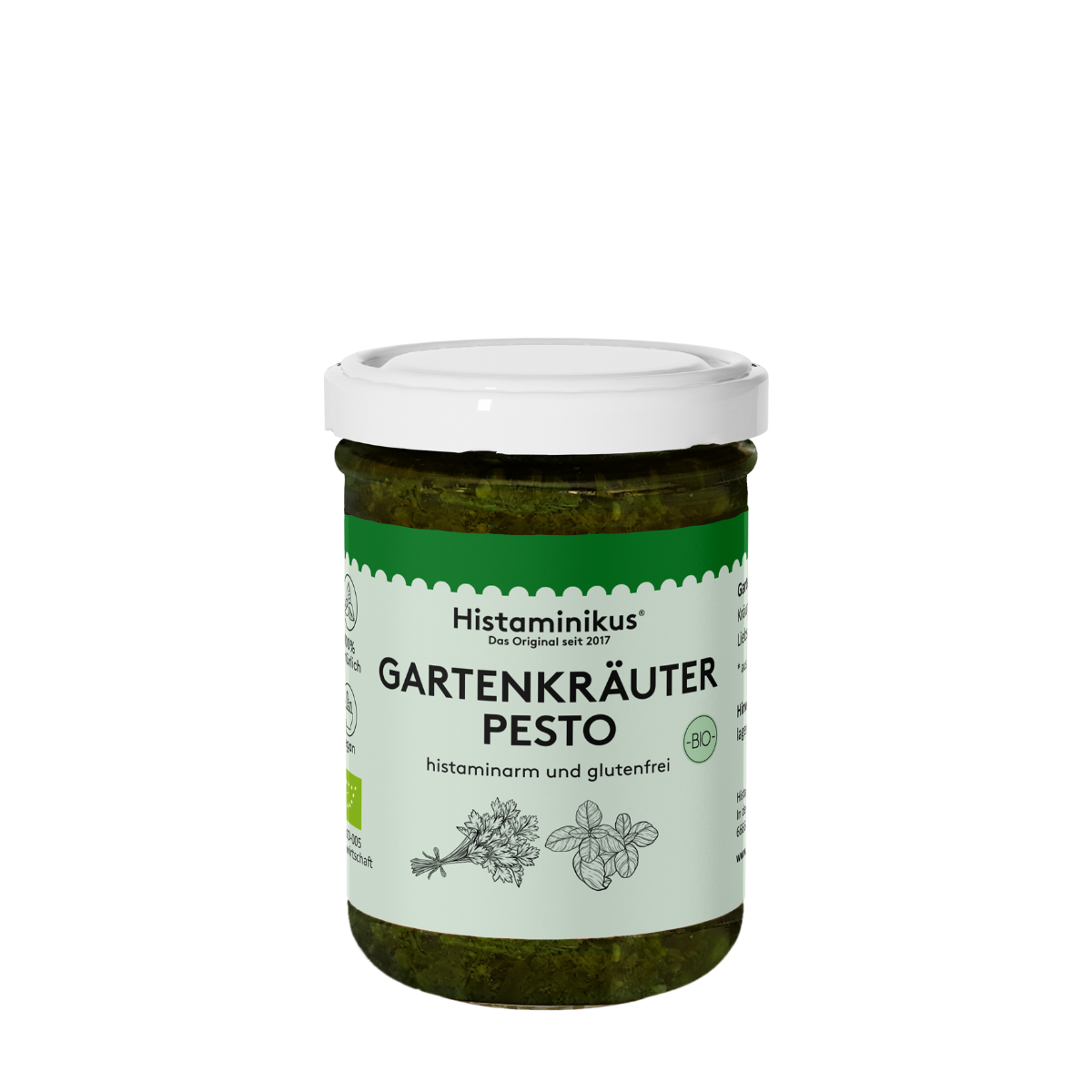
Advertisement
Histaminikus
Garden herbal pesto organic
4.59 / 5.0
(75) 75 total reviews
Share
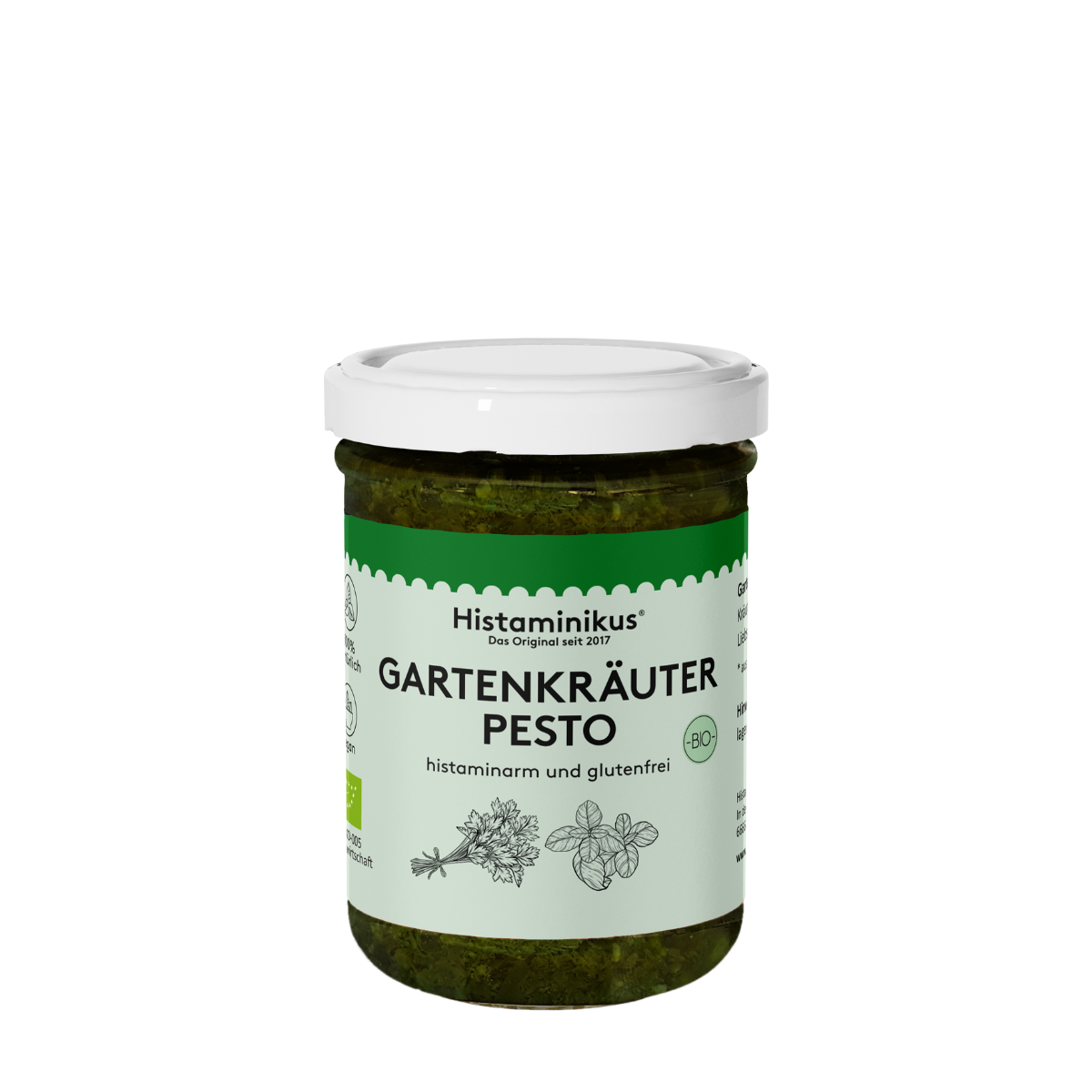
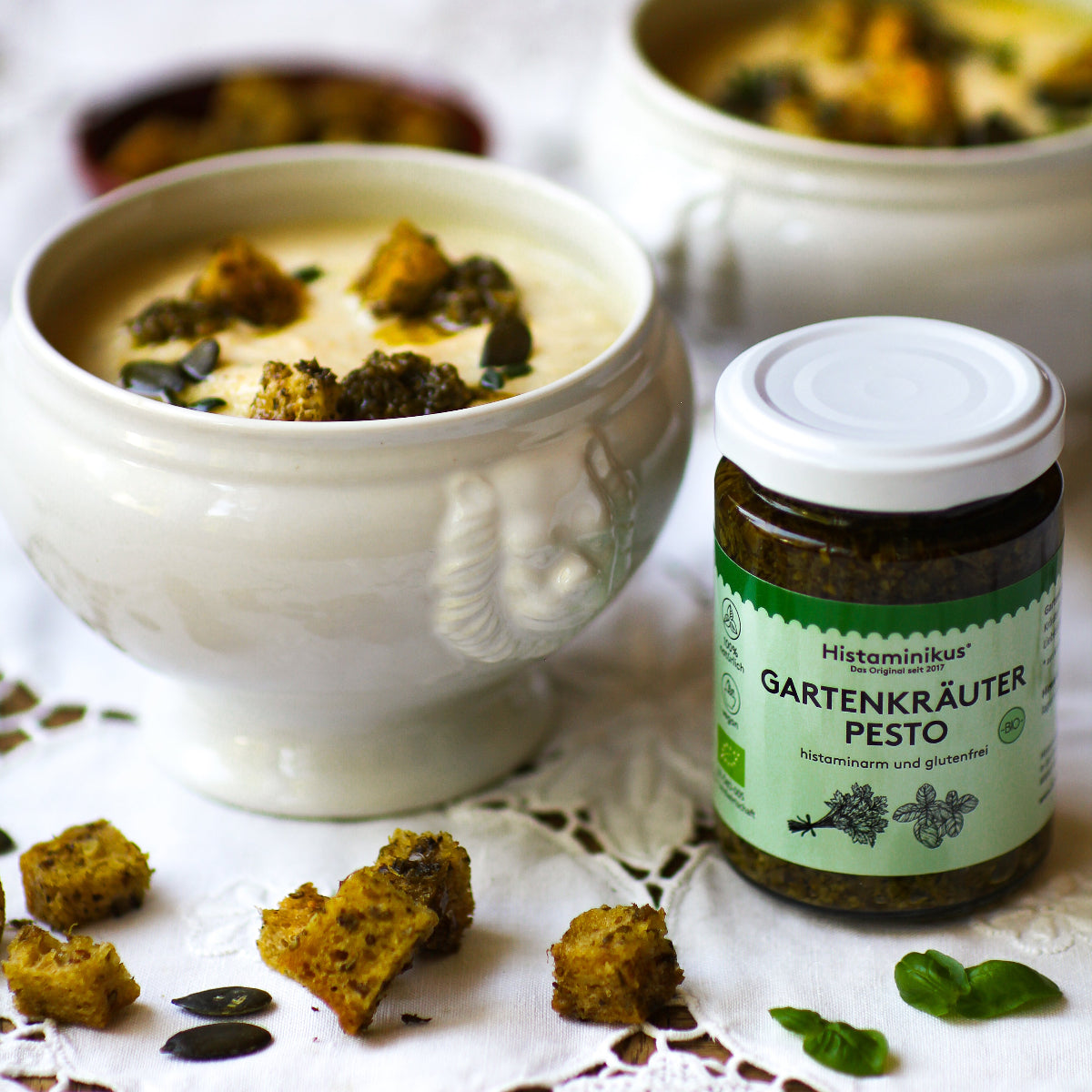

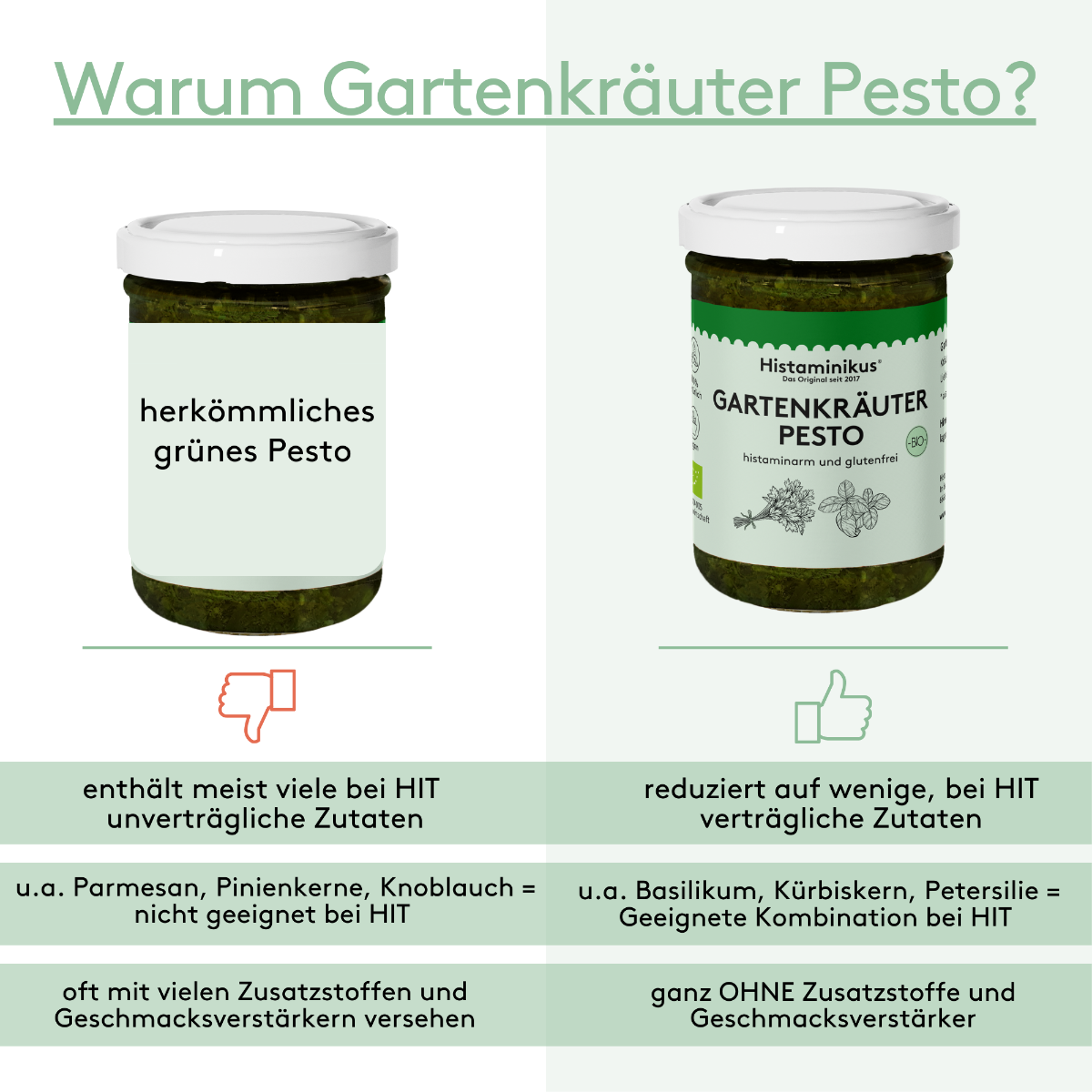
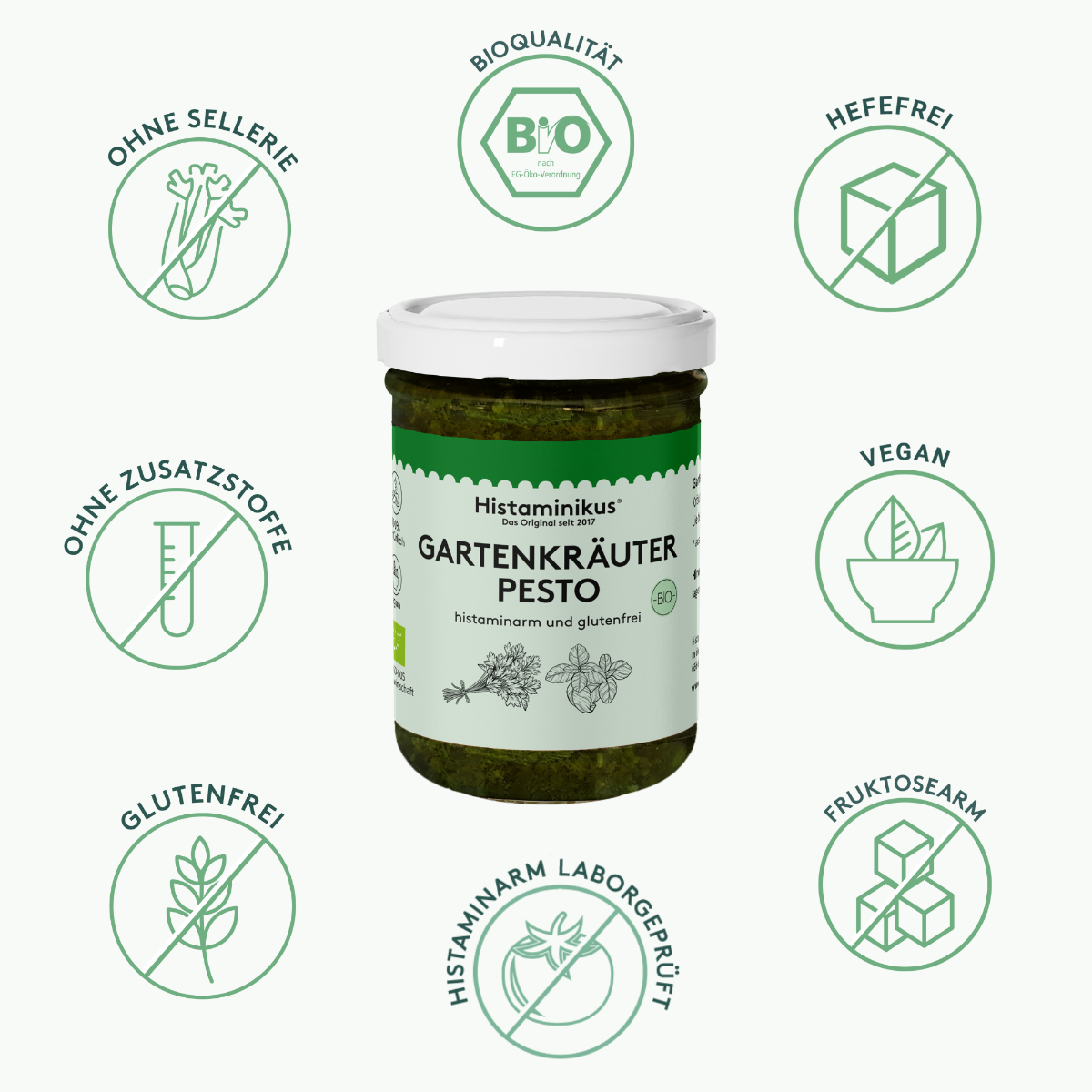

How are biogenic amine broken down?
Due to the possible toxic effects of biogenic amines, many body -own tissue contain amino -breaking enzymes: especially the intestinal mucosa, blood plasma, liver, kidney and nerve tissue, but also lungs, blood vessels, adrenal glands, heart and spleen. The degradation takes place via different ways, although the oxidation seems to be the most important way. Amin-breaking enzymes are: Monoaminoxidase (MAO), Diaminoxidase (DAO) as well as methyltransferasen such as the Histamine N-methyltransferase (HNMT) or the Catechol-O-Methyltransferase. This enzymes prevent excessive absorption or excess in the tissue.
In the intestinal mucosa, the enzymes Mao and Dao primarily offer protection against biogenic amines and are responsible for the breakdown of amines.
The MAO forms the most important barrier for the uncontrolled absorption of amines in the blood. It does tyramine, tryptamine, phenylethylamine, benzylamine, methylhistamine, dopamine, noradrenaline and serotonin. The MAO can not only be found in the intestinal mucosa, but also in the blood and many organs.
The DAO is the most important enzyme for the breakdown of histamine and thus forms the most important barrier for the uncontrolled absorption of exogenous histamine into the blood. It also metabolizes Cadaverin, Putrescin, Spermin and Spermidine. The DAO always cuts up Cadaverin and Putrescin before it breaks down histamine. With the simultaneous absorption of histamine and one of the two amines, there is therefore an inhibition, so that histamine is only delayed delayed. This can be done when eating red wine and cheese at the same time. If too much biogenic amine is absorbed through food, the DAO can also exhaust it, so that no enzyme activity is no longer available for histamine and the histamine barrel cannot be emptied.
In sensitive people, the aminating enzymes are not sufficiently present or even inhibited. This can comment in allergy -like symptoms.
Causes of lack of enzyme activity or symptoms:
- Various medication can block the DAO and MAO.
- Other biogenic amines can inhibit the enzymes. Tyramin, for example, inhibits the DAO as well as the one.
- Certain foods - e.g. alcohol, green tea, black tea - are among the DAO inhibitors.
- Combined intake of biogenic amines and fabrics that increase the absorption of biogenic amines (e.g. alcohol) or slow down.
- Other biogenic amines that contribute to the release of histamine from the mast cells (e.g. serotonin, dopamine, tyramine).
What exactly should you consider now?
Even for healthy people, high loads of food with biogenic amines can be avoided. The "Fish" food group is most problematic. Health -damaging concentrations of biogenic amines can develop within just a few days (keyword: fish poisoning).
So pay attention to the following measures:
- Start the "Green" foods in the Sighi list primarily.
- Pay attention to the correct storage of easily perishable food.
- Buy meat or fish just fresh or as a TK goods.
- Only interrupt the cooling chain as short as possible: go shopping with a cooler bag and clear the food in the fridge immediately after shopping or freeze it.
- Thawen -containing food quickly and process them directly.
- Heat protein -containing foods do not open a second time.
In this way you can reduce the creation of biogenic amines.
Collapsible content
Sources
- https://www.ncbi.nlm.nih.gov/pmc/articles/PMC7305651/
- https://de.wikipedia.org/wiki/Biogene_Amine
- Immediate guide histamine intolerance of Prof. Dr. Martin Storr
- https://link.springer.com/article/10.1007/s000110050463
- Public Health Risks of Histamine and other Biogenic Amines from Fish and Fishery Products, Who and Food and Agriculture Organization of the United Nations, 23.-27.07.2012
- https://www.ernaehrungs-umschau.de/fileadmin/Ernaehrungs-Umschau/pdfs/pfd_2009/03_09/EU03_172_179.qxd.pdf
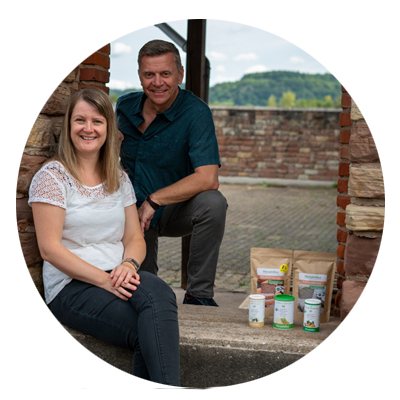
FROM THOSE AFFECTED FOR THOSE AFFECTED
We are Thomas and Michaela Zinser, founder of Histaminikus.
Because of the own histamine intolerance of Michaela and our son, we founded Histaminikus. The frustration does not find any suitable histamine food has spurred us to develop low -histamine food.
We would like to give you back a piece of quality of life. Feel free to look around with us.
Kind regards
Thomas and Michaela

